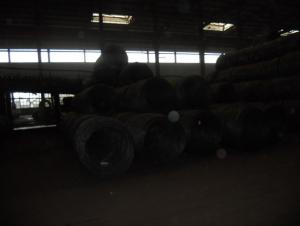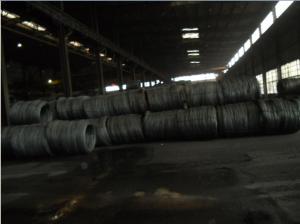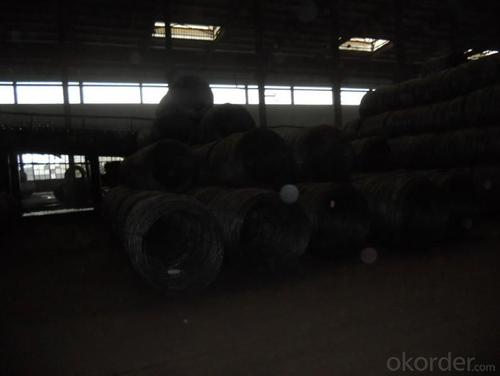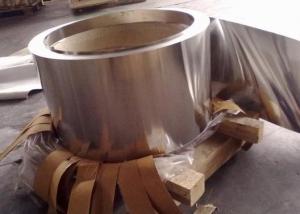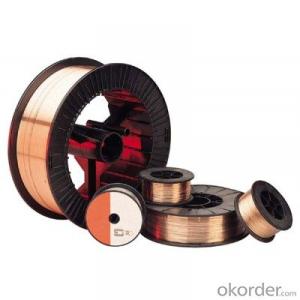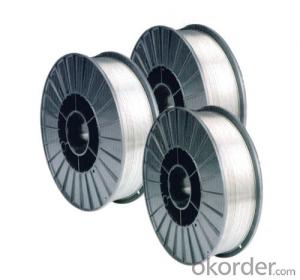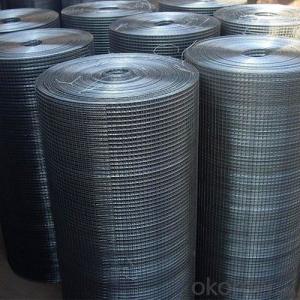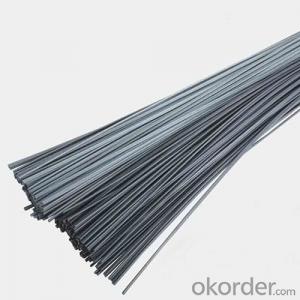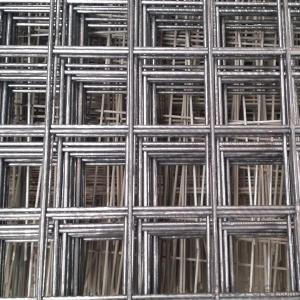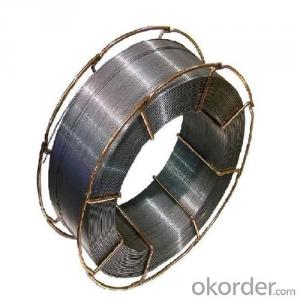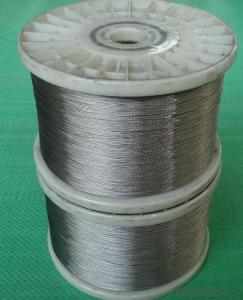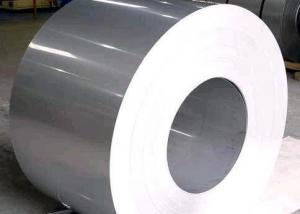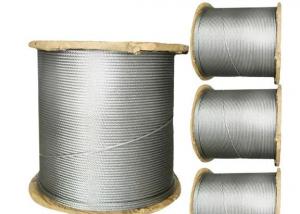Cheap Stainless Steel Wire
- Loading Port:
- China Main Port
- Payment Terms:
- TT or LC
- Min Order Qty:
- 20 ton m.t.
- Supply Capability:
- 20000 ton m.t./month
OKorder Service Pledge
OKorder Financial Service
You Might Also Like
Cheap Stainless Steel Wire
Application Of Cheap Stainless Steel Wire
With bright surface, slight magnetism and no cracks on forming, is widely used in bicycle fittings, kitchen and sanitation tools, goods shelf, pet cages, gill racks, decorative handles and baskets, food and medical machinery accesses, etc.
Advantage Of Cheap Stainless Steel Wire
Our range of Wire made of Stainless Steel are not only known for their variety but are also known for their good quality, long life and very reasonable prices. Quality and service is our first priority, we effectively use technically advanced machinery equipment and the expertise of our work to deliver our stainless steel wired products
General Information Of Cheap Stainless Steel Wire
Size | 5.5/6.5/7.5/9/9.5/11/12/13/15/16/18/20/22/23mm |
Material | 304,304L,316,316L ,321 etc. |
Standard | AISI,JIS,GB,DIN |
Finish | Black, bright finish |
Testing | Each heat number and batch must be tested for both chemical and mechanical properties |
Property | Stainless steel wire, Stainless steel wire rod, stainless steel |
Quality | prime |
Manufacturing Process | factory direct sale |
Surface Treatment | Black, bright finish |
Main Grade | 304,321,316,316L,309,310,309H,310S |
Dilvery time | 20days or depend on order quantity |
Container | 20days or depend on order quantity |
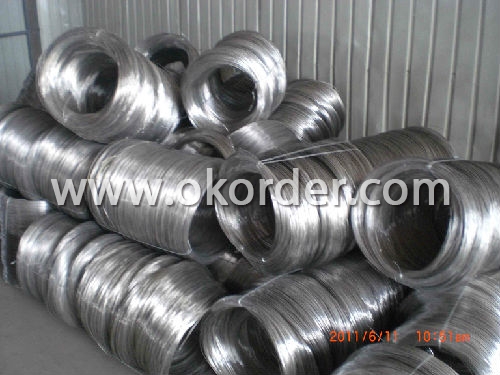

- Q: Is stainless steel wire resistant to pitting?
- Yes, stainless steel wire is resistant to pitting. Pitting corrosion is a form of localized corrosion that can occur in metals, but stainless steel is specifically designed to resist this type of corrosion. Stainless steel contains a high amount of chromium, which forms a protective oxide layer on the surface of the metal. This oxide layer acts as a barrier, preventing the penetration of corrosive substances and inhibiting pitting corrosion. Additionally, stainless steel wire can be further enhanced with the addition of other alloying elements, such as molybdenum or nickel, which increase its resistance to pitting. Therefore, stainless steel wire is widely recognized for its excellent resistance to pitting corrosion, making it suitable for a wide range of applications in various industries.
- Q: Is stainless steel wire suitable for food processing applications?
- Yes, stainless steel wire is highly suitable for food processing applications. Stainless steel is resistant to corrosion, rust, and staining, making it safe and hygienic for handling food. It is easy to clean, durable, and does not react with acidic or alkaline foods, ensuring the integrity and quality of the processed food. Additionally, stainless steel wire is strong and can withstand high temperatures, making it ideal for various food processing equipment and machinery.
- Q: Is stainless steel wire suitable for architectural mesh?
- Yes, stainless steel wire is highly suitable for architectural mesh. Stainless steel is a corrosion-resistant material that can withstand harsh environmental conditions, making it ideal for outdoor applications such as architectural mesh. It offers excellent strength and durability, ensuring that the mesh can withstand heavy loads and maintain its structural integrity over time. The wire can be woven into intricate patterns and designs, allowing for creative and visually appealing architectural applications. Additionally, stainless steel wire can be easily cleaned and maintained, making it a practical choice for architectural projects where hygiene and cleanliness are important. Overall, stainless steel wire is a reliable and versatile material that meets the requirements of architectural mesh in terms of aesthetics, durability, and functionality.
- Q: What's the difference between a stainless steel cup and a nonmagnetic one?
- Non-magnetic stainless steel, that is, austenitic stainless steel, 200 series and 300 series are non-magnetic, and magnetic stainless steel belongs to martensitic steel, the 400 line is also called stainless steel, iron belongs to this kind. With magnetic stainless steel, magnetic permeability is strong, suitable for electromagnetic ovenTheoretically speakingNon-magnetic stainless steel pots do no harm to your bodyThere are many aluminum kettles. They contain other metals. There are many aluminum kettles that do harm to the body, not experts
- Q: Is stainless steel wire suitable for wire rope pulleys?
- Yes, stainless steel wire is suitable for wire rope pulleys. Stainless steel has high strength and corrosion resistance, making it an ideal choice for applications where durability and longevity are important, such as in wire rope pulleys that are frequently used or exposed to harsh environments.
- Q: Can stainless steel wire be used in medical applications?
- Yes, stainless steel wire can be used in medical applications. Stainless steel is a durable and corrosion-resistant material that is commonly used in medical instruments, such as surgical tools, catheters, and orthopedic implants. It is preferred for its biocompatibility, strength, and ability to maintain sterility in medical environments.
- Q: How are stainless steel wire connectors used in plumbing installations?
- Stainless steel wire connectors are commonly used in plumbing installations to join and secure pipes, fittings, and other components together. These connectors provide a strong and reliable connection that is resistant to corrosion and leaks. They are typically used in applications where durability and longevity are important, such as in water supply lines, gas lines, and drainage systems.
- Q: Can stainless steel wire be used for safety pins?
- Yes, stainless steel wire can be used for safety pins. Stainless steel is a durable and strong material that is resistant to corrosion, making it suitable for various applications, including safety pins. Safety pins are commonly made from stainless steel wire due to its ability to withstand tension and maintain its shape over time. Additionally, stainless steel's smooth surface and resistance to rusting ensure that the safety pins will not easily break or deteriorate with use.
- Q: How is stainless steel wire made?
- Stainless steel wire is made through a process called wire drawing. It begins with the production of stainless steel rods or bars, which are typically made using a combination of iron, chromium, and other alloying elements. These materials are melted together in a furnace, and then solidified into long billets or slabs. The stainless steel billets are then hot rolled into thin strips or coils, which are subsequently annealed (heated and allowed to cool slowly) to remove any internal stress and improve the material's ductility. The annealed stainless steel strips are then pickled to remove any scale or oxides on the surface. Next, the stainless steel strips are fed through a series of wire drawing machines, also known as drawing dies. These dies are made of hard materials such as tungsten carbide, and they gradually reduce the diameter of the stainless steel strips, pulling them through smaller and smaller holes. As the stainless steel strips pass through each die, their diameter decreases while their length increases. This process is repeated multiple times until the desired wire diameter is achieved. Each pass through a drawing die increases the strength and hardness of the stainless steel wire. Once the wire drawing process is complete, the stainless steel wire is typically cleaned and coated with a lubricant or a coating to improve its surface finish and protect it against corrosion. The wire is then wound onto spools or coils and is ready to be used for various applications such as in the manufacturing of springs, cables, mesh, fasteners, and much more.
- Q: Can stainless steel wire be used for wire knitting or crocheting?
- Yes, stainless steel wire can be used for wire knitting or crocheting. Stainless steel wire is a versatile material that is strong and durable, making it suitable for various crafting projects, including wire knitting or crocheting. It offers a unique aesthetic with its shiny and metallic appearance, making it a popular choice for jewelry making and other decorative items. Additionally, stainless steel wire is resistant to corrosion and tarnish, ensuring that your creations will last longer and maintain their quality. However, it is important to note that stainless steel wire may be harder to work with compared to other types of wire, as it is less flexible and may require specialized tools or techniques.
Send your message to us
Cheap Stainless Steel Wire
- Loading Port:
- China Main Port
- Payment Terms:
- TT or LC
- Min Order Qty:
- 20 ton m.t.
- Supply Capability:
- 20000 ton m.t./month
OKorder Service Pledge
OKorder Financial Service
Similar products
Hot products
Hot Searches
Related keywords
